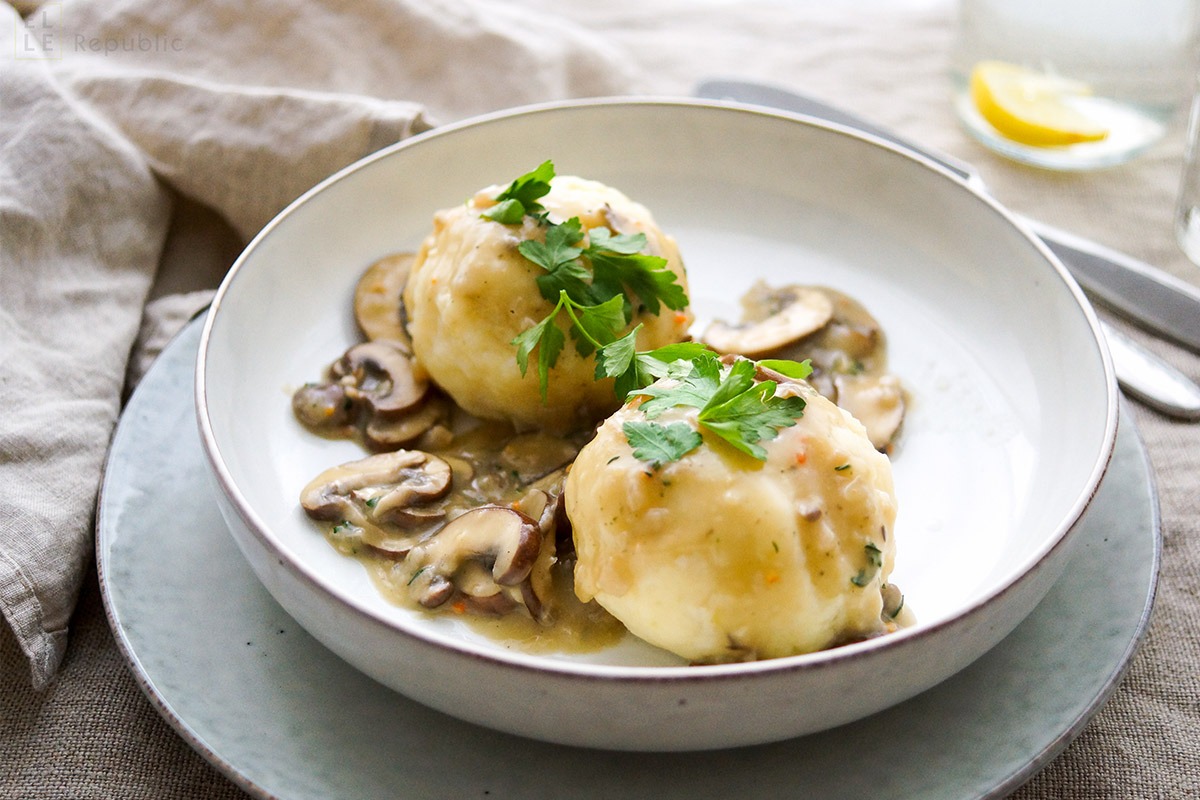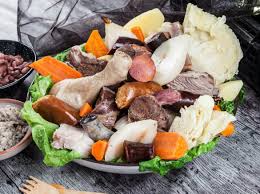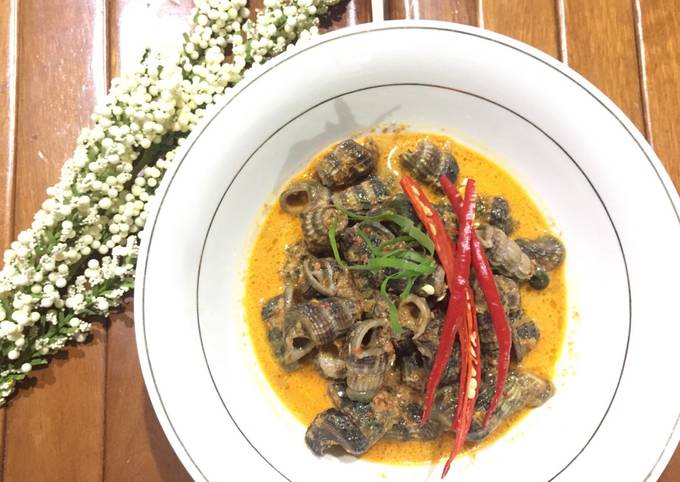Knödel, also known as potato dumplings, is a beloved dish in German cuisine. These soft, hearty dumplings have been a staple in Central European kitchens for centuries. They are often served as a side dish to complement various meat-based meals, enhancing flavors and adding a satisfying texture. In this article, we will explore the history, preparation methods, variations, and cultural significance of Knödl .
The History of Knödel
Contents
The origins of Knödel date back to medieval Europe, where they were commonly prepared by German, Austrian, and Czech communities. Historically, these dumplings were made using stale bread, potatoes, or flour, depending on regional availability. Over time, potato-based Knödl became particularly popular in Bavaria and Austria due to the widespread cultivation of potatoes.
Throughout history, Knödl has been more than just food; it has symbolized hospitality and tradition. Families would gather around the kitchen to prepare these dumplings for festive occasions and celebrations. Today, Knödl remains a cherished dish nakbon enjoyed by generations.
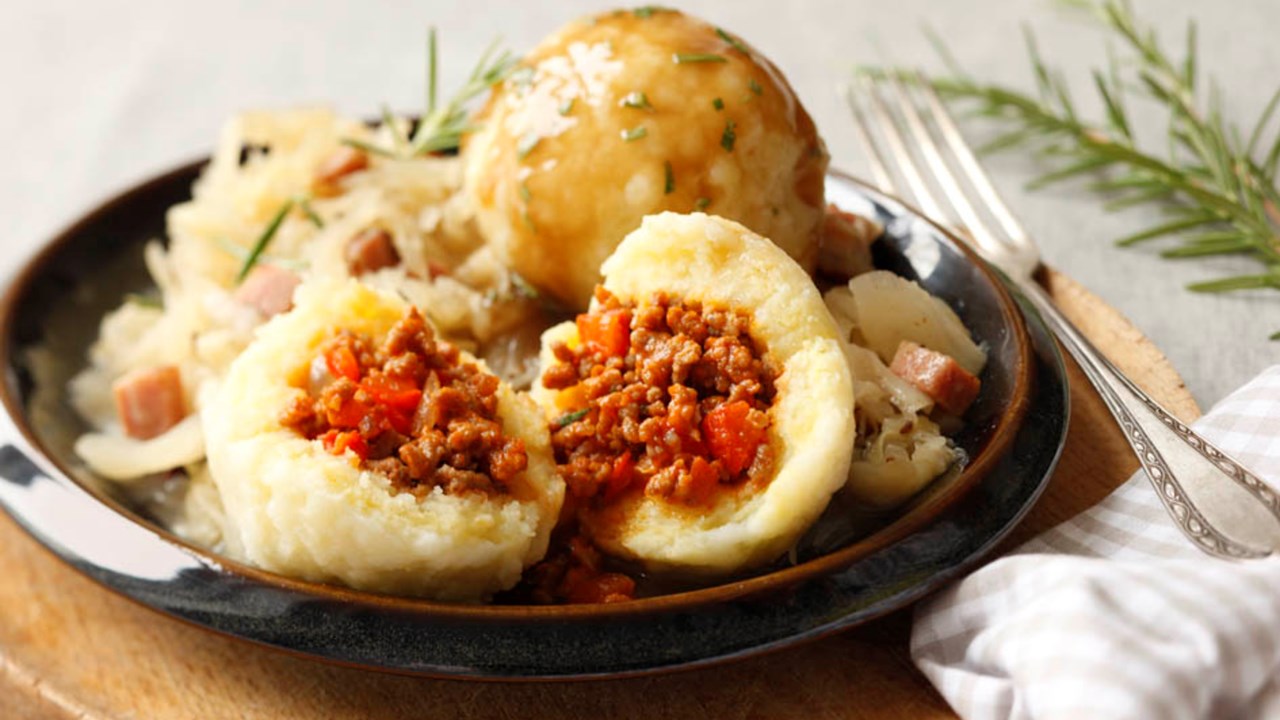
Ingredients for Traditional Knödel
To make classic potato Knödl , you will need a few simple ingredients:
- 1 kg potatoes (preferably starchy potatoes like Russet or Yukon Gold)
- 2 eggs
- 100 g potato starch or flour
- Salt to taste
- Nutmeg (optional, for extra flavor)
- Breadcrumbs (optional, for texture enhancement)
- Butter (for serving)
These basic ingredients allow for a flexible recipe that can be adapted to personal preferences or dietary restrictions.
How to Make Knödel
Making Knödl requires patience and precision. Follow these steps to achieve the perfect potato dumplings:
- Boil the Potatoes – Peel and boil the potatoes until they are tender. Drain and let them cool slightly.
- Mash the Potatoes – Mash them while they are still warm to create a smooth, lump-free consistency.
- Prepare the Dough – Mix the mashed potatoes with eggs, potato starch, salt, and nutmeg to form a pliable dough. Avoid over-mixing to prevent a gummy texture.
- Shape the Dumplings – Take portions of the dough and roll them into small, round dumplings.
- Boil the Knödel – Bring a pot of salted water to a gentle boil. Carefully drop the dumplings into the water and cook them until they float to the surface.
- Drain and Serve – Remove the dumplings with a slotted spoon, drain excess water, and serve warm with melted butter or gravy.
Variations of Knödel
Different regions have unique variations of Knödl , each offering a distinct taste and texture:
- Semmelknödel – Made from bread instead of potatoes, commonly found in Bavarian cuisine.
- Speckknödel – Includes crispy bacon pieces for an added smoky flavor.
- Spinatknödel – Incorporates spinach into the dough for a healthier alternative.
- Marillenknödel – A sweet variation filled with apricots and coated with cinnamon sugar.
Each version of Knödl has its own charm and can be paired with a variety of dishes.
Knödel in German Cuisine
Knödel is an essential part of German meals, often served alongside rich gravies, roasted meats, or stews. Some of the best-known dishes featuring Knödl include:
- Schweinebraten mit Knödel – Roasted pork served with dumplings and a thick sauce.
- Rinderroulade mit Knödel – Braised beef roulades with a side of soft dumplings.
- Gulasch mit Knödel – A hearty goulash accompanied by Knödl to absorb the flavorful sauce.
This versatile dish brings warmth and comfort to any meal.
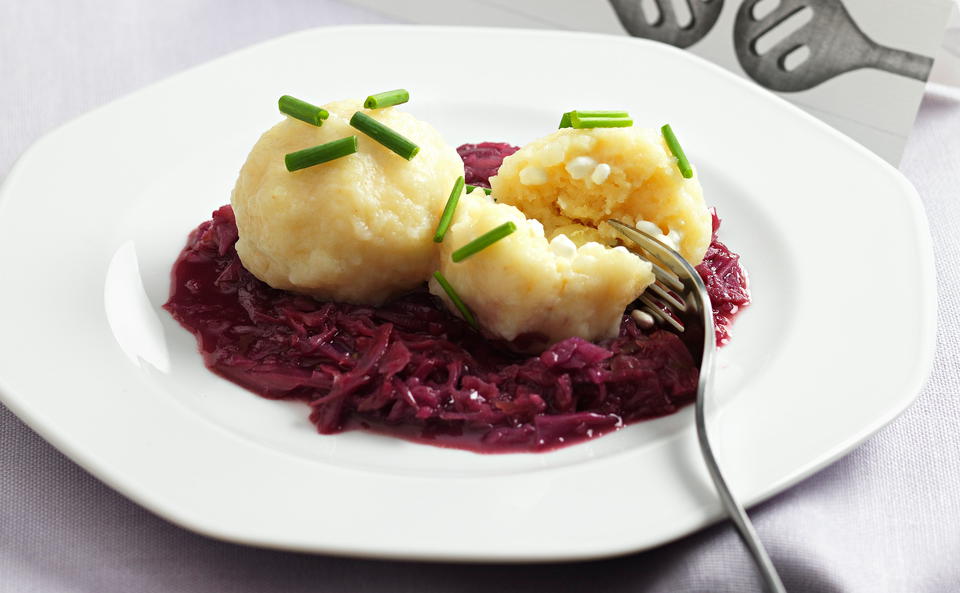
The Cultural Significance of Knödel
Beyond being a delicious side dish, Knödl holds cultural significance in German-speaking countries. It is often associated with family gatherings, holidays, and special occasions. Many traditional German restaurants proudly serve homemade Knödl , keeping the culinary heritage alive.
Additionally, Knödel competitions and food festivals celebrate this iconic dish, allowing chefs and home cooks to showcase their skills in crafting the perfect dumpling. The love for Knödl continues to transcend generations, maintaining its status as a cherished element of German gastronomy.
Tips for Perfect Knödel
To ensure your Knödl turns out perfectly every time, consider these tips:
- Use starchy potatoes – This helps achieve the ideal consistency and prevents the dumplings from falling apart.
- Don’t overwork the dough – Overmixing can lead to a dense and chewy texture.
- Boil gently – A rolling boil can cause the dumplings to break apart, so keep the water at a gentle simmer.
- Experiment with fillings – Try stuffing Knödl with cheese, mushrooms, or even meat for a creative twist.
With practice, making Knödl will become an enjoyable culinary tradition in your kitchen.
Knödel, the traditional German potato dumpling, is a beloved dish that has stood the test of time. Whether served as a savory side dish or enjoyed as a sweet dessert variation, Knödl offers a unique taste of German culture. By following the steps and tips in this guide, you can recreate this classic dish at home and experience the comforting flavors of authentic German cuisine.
Try making Knödl today and bring a piece of Germany to your dining table
Also read this article: Wise Ways: to Deal with People Who Like to Seek Faces

